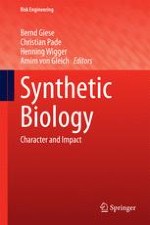
2015 | OriginalPaper | Buchkapitel
Synthetic Biology as Late-Modern Technology
Inquiring into the Rhetoric and Reality of a New Technoscientific Wave
verfasst von : Jan C. Schmidt
Erschienen in: Synthetic Biology
Aktivieren Sie unsere intelligente Suche, um passende Fachinhalte oder Patente zu finden.
Wählen Sie Textabschnitte aus um mit Künstlicher Intelligenz passenden Patente zu finden. powered by
Markieren Sie Textabschnitte, um KI-gestützt weitere passende Inhalte zu finden. powered by